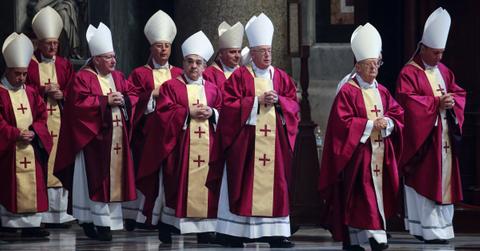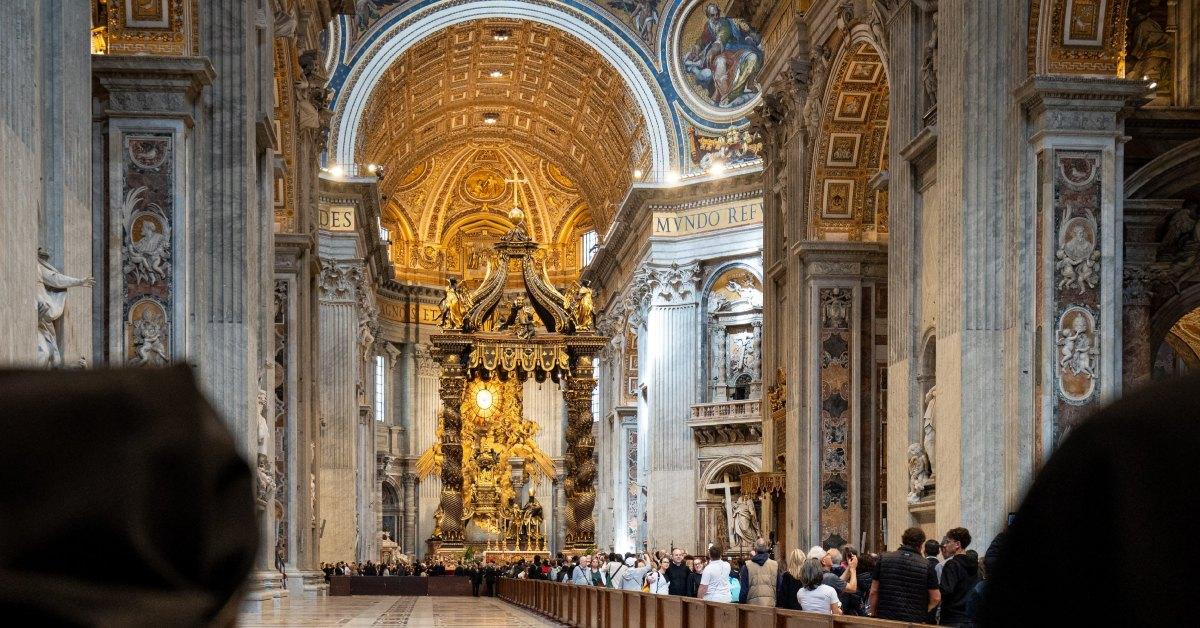The Conclave is a Very Tedious and Private Process, but How Long Does It Last?
The longest conclave in history took place in 1268.
Published April 28 2025, 2:20 p.m. ET

When a pope resigns or passes away, like when Pope Francis died on April 21, 2025, at 88 years old, the Catholic Church must choose a new leader. The process, called the conclave, is a super private, tightly controlled election handled by the College of Cardinals — a group made up of Vatican officials and bishops handpicked by the pope.
The catch, however is that only cardinals under the age of 80 get to vote, according to the United States Conference of Catholic Bishops, and they’re known as the cardinal electors. So, how long does this whole conclave process actually take?
How long is the conclave process?

The conclave process doesn't have a set timeframe, meaning it can last anywhere from days to weeks or even months. Typically, though, it begins 15 to 20 days after a papal vacancy occurs, according to the United States Conference of Catholic Bishops. For a new pope to be elected, a candidate must receive two-thirds of the vote from the College of Cardinals.
Once a candidate hits that threshold, the dean of the College of Cardinals asks the cardinals if they accept the candidate. If yes, a papal name is chosen and a new pope is given the green light to step into the role.
Here’s how the conclave usually works: Once the cardinal electors are acknowledged, they proceed to the Sistine Chapel, where they pledge to maintain confidentiality before the doors are sealed. Each day, four rounds of ballots are held, and every time a vote is cast, a cardinal elector walks up to Michelangelo’s fresco of The Last Judgment, says a prayer, and drops their ballot into a large chalice.
Three cardinals, designated as recorders, count the votes to see if someone has secured the two-thirds majority. If not, the ballots are burned in a stove, sending black smoke out of the chapel. The cardinals repeat this until a candidate wins the required number of votes, and when that happens, the ballots are burned again, but this time, white smoke rises from the Sistine Chapel to signal to the world that a new pope has been chosen.
During the conclave, cardinals are typically not permitted to leave the chapel until a two-thirds vote is received. This can make the process very lengthy if it extends beyond a day or two, as has happened in the past.
What was the longest conclave?
The longest conclave in history lasted nearly three years when a successor to Pope Clement IV was being chosen, Monsignor Salvatore del Cicuo told ABC News in 2005. The conclave began in November 1268 and ended in September 1271. Gregory X was eventually chosen as the new pope, but clearly, it took a lot of time and deliberation for the cardinals to arrive at this decision.
Nowadays, it typically takes just a few days for a conclave to conclude, with the last two lasting only two days. However, that’s not to say the 2025 conclave for Pope Francis’s successor won’t take longer, as there’s a lot to consider.